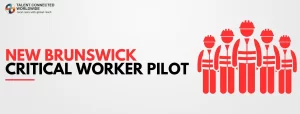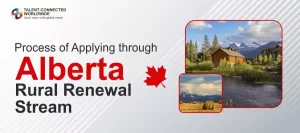
Are you thinking to Immigrate to Canada as a truck driver? Therefore, Canada is experiencing a historic workforce shortage across the country. Trucking is one of the hardest impacted industries, Hence the demand for long-haul truck drivers has never been higher.
Truck Driving Careers In-Demand
The current vacancy rate in truck transportation is roughly 8%, according to Statistics Canada. Hence, there are over 55,600 truck driver job openings across Canada. According to the labor supply prediction, about 36,000 people will retire between 2019 and 2023, with an additional 136,600 leaving their positions for non-retirement reasons.
With the start of the new NOC codes, Immigration Minister Sean Fraser has stated that truck drivers would soon be eligible for Express Entry. The new NOC codes will go into effect on November 16th and will include a code for transport truck drivers.
How to Immigrate to Canada as a Truck Driver
If you enjoy driving trucks, you can come to Canada in one of three ways:
1. Express Entry
The Canadian government organizes and processes Express Entry applications for skilled professionals who desire to immigrate to Canada and get Canadian permanent residence (Canada PR) status. So, The system is in charge of managing the government Skilled Worker Program (FSW), one of three primary government economic programs.
To be qualified for placement in a pool of candidates for immigration, the candidate must first meet the requirements of FSW. They can create an online Express Entry profile that includes their skills and qualifications. The Express Entry system then uses a Comprehensive Ranking System (CRS) to rank applicants against other applicants in the pool based on a points-based system that takes into account a variety of factors such as age, education, work experience (both abroad and in Canada), language proficiency in English and French, family members, and details on any job offer. So, every two weeks, the IRCC organizes a draw and invites the highest-ranking individuals to obtain an Invitation to Apply (ITA) for Canadian permanent residence (Canada PR visa).
2. PNPs as Truck Drivers via Express Entry
There are two methods for applying.
- Applicants contact their province or territory and request a nomination through their Express Entry stream. They receive a nomination through their account, which they electronically accept. So, If the province or territory agrees to nominate them, they construct an Express Entry profile (or edit an existing one) and show that they have been set.
- Applicants build an Express Entry profile and indicate the provinces and territories in which they are interested. So, If they are nominated, “they will offer it to them through their account and accept it electronically.” They contact them immediately whenever a province or territory sends a “notification of interest” to their account.
3. PNP’s as a Truck Driver – Non-Express Entry (Paper-based process)
You apply for nomination through a non-Express Entry stream to the province or territory. So, you must fulfill the eligibility conditions of the region that nominated you. Once you’ve made your decision, you must submit a written application for permanent residency to Immigration, Refugees, and Citizenship Canada. The application processing time is longer than with Express Entry.
Steps of the Application Process
You have verified your eligibility for the program and position for which you are applying. Now, regardless of the curriculum you choose, do the following steps to apply for your truck driver job:
Step 1: Locate Your NOC (Transportation Truck Drivers: NOC TEER 7511).
Step 2: Determine Your Eligibility
Step 3: Find and Accept a Job Offer
Step 4: Determine the type of work permit required.
Step 5: Collect all supporting documentation and complete all required fields.










